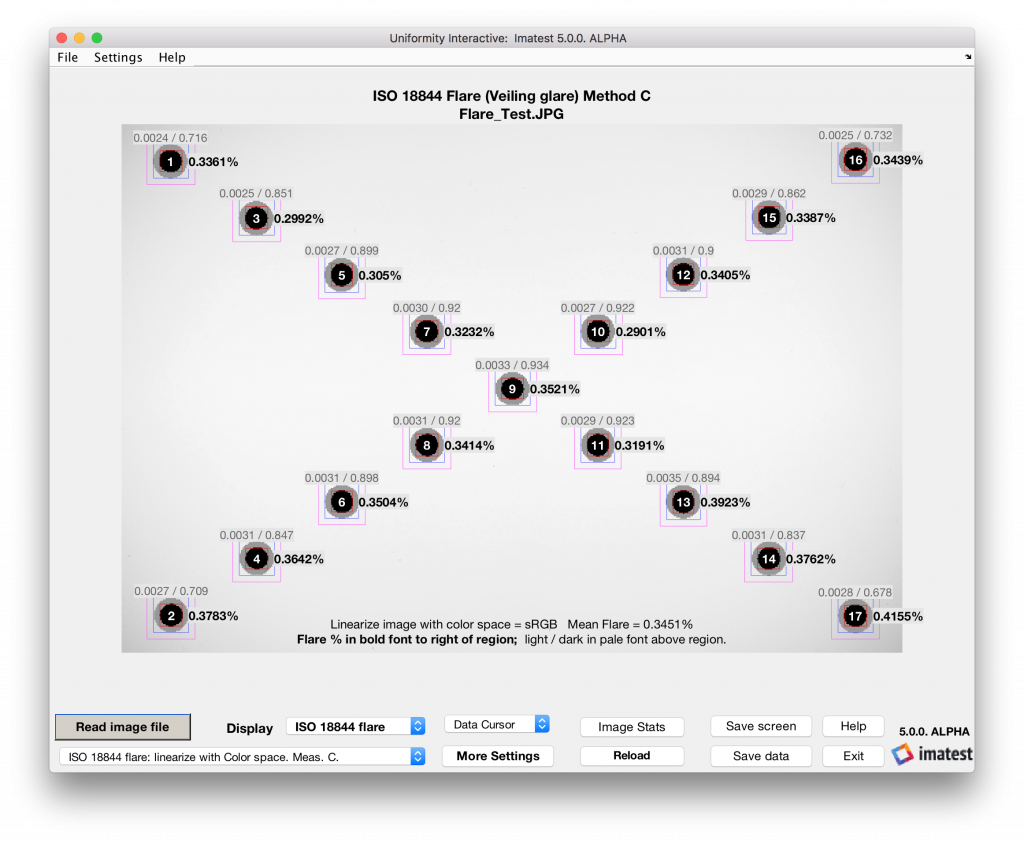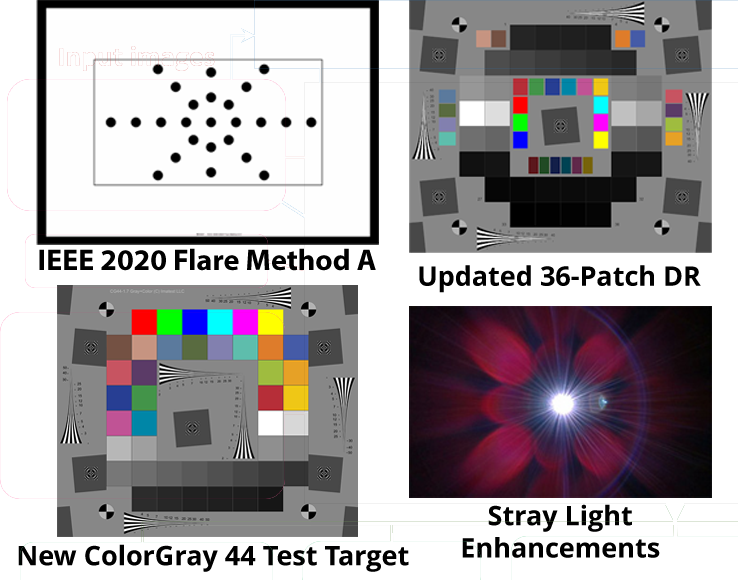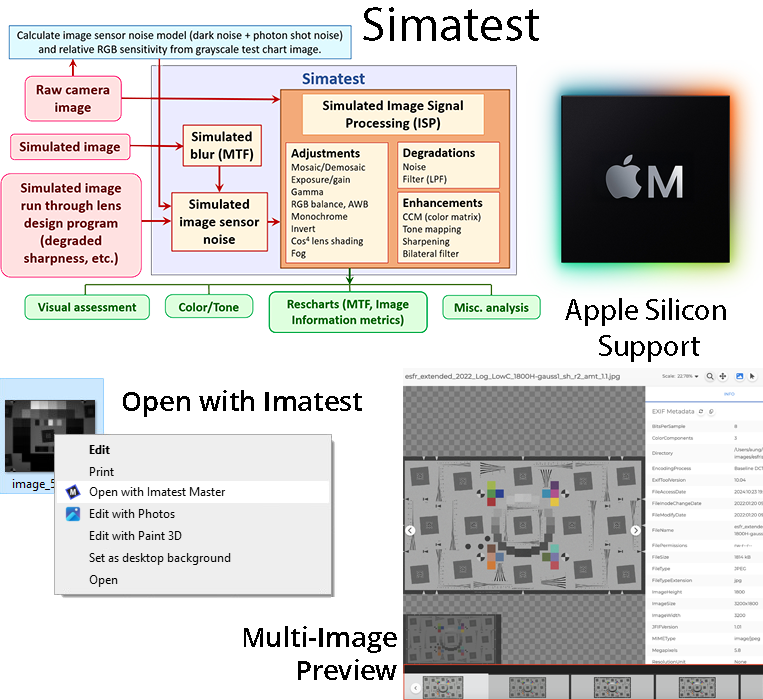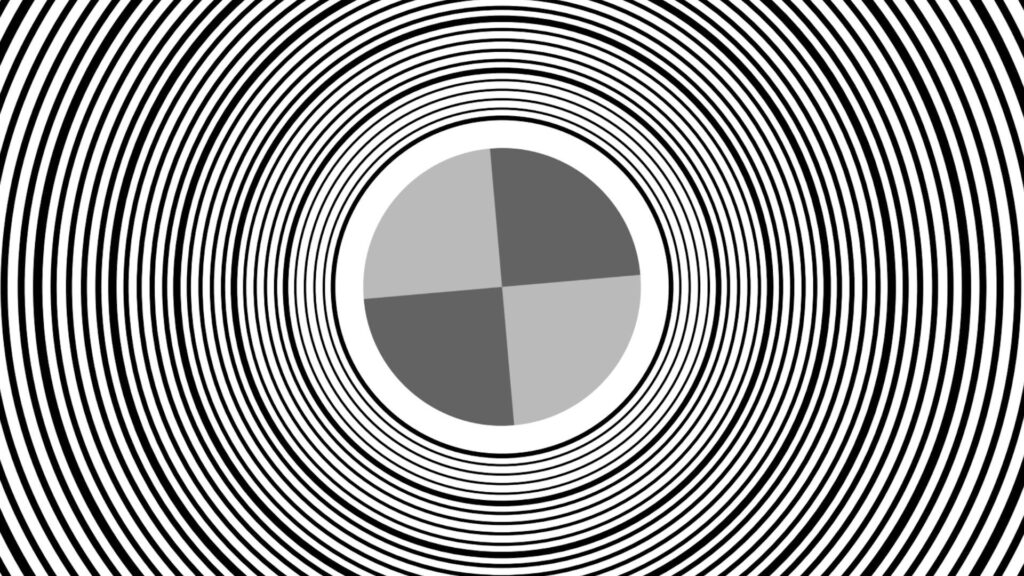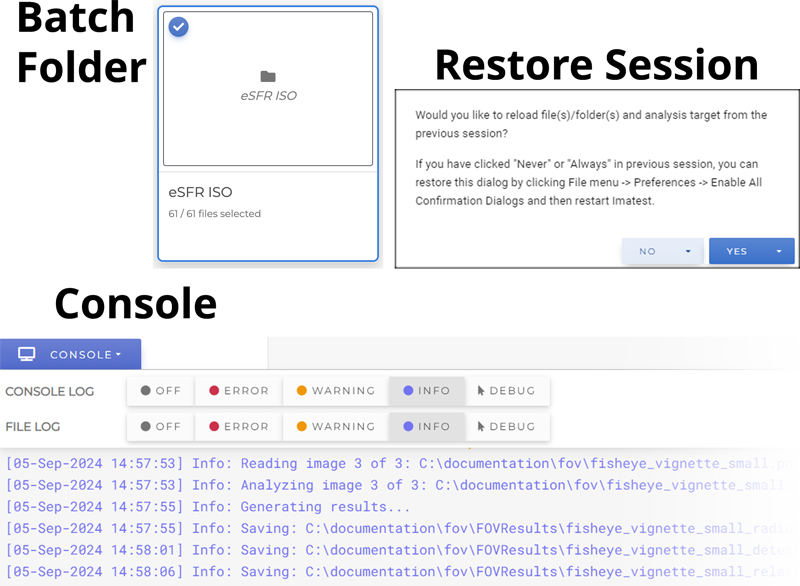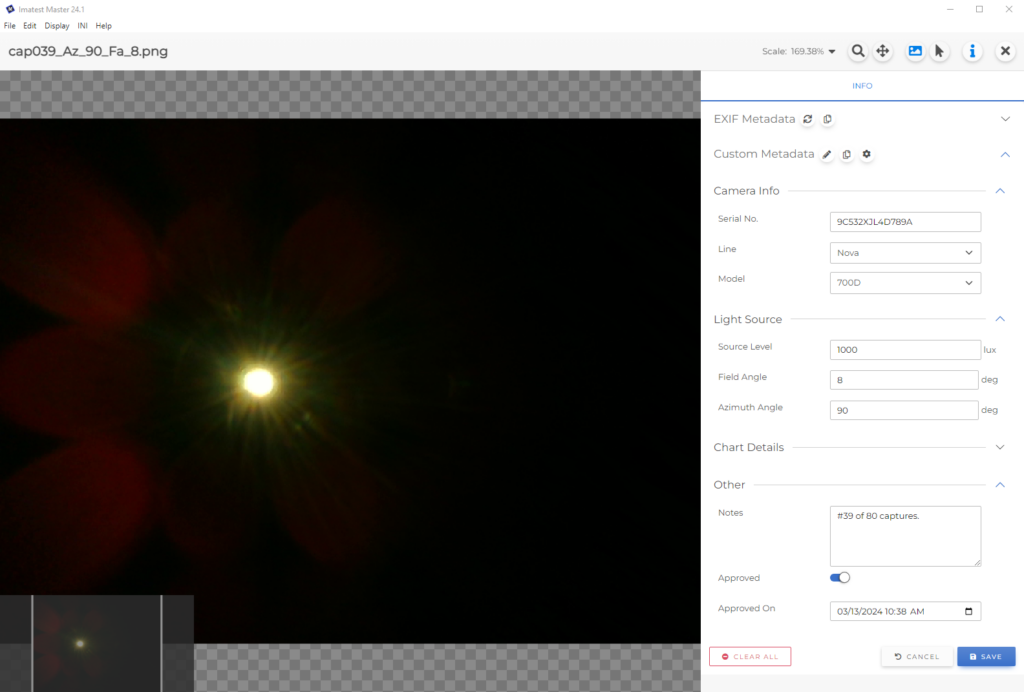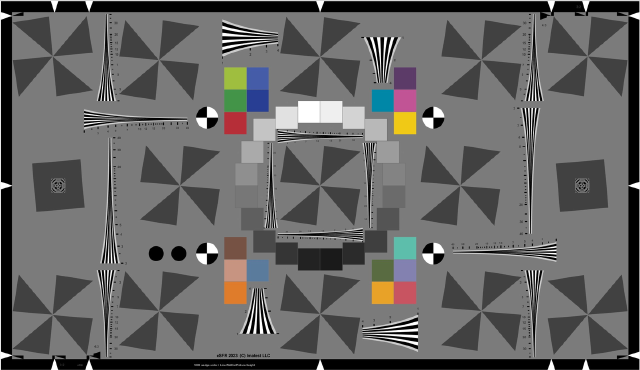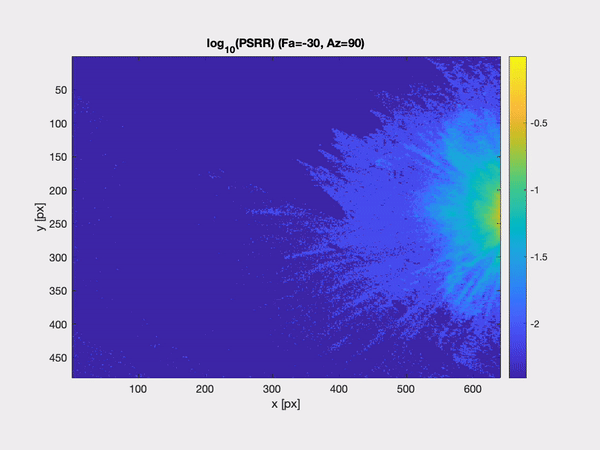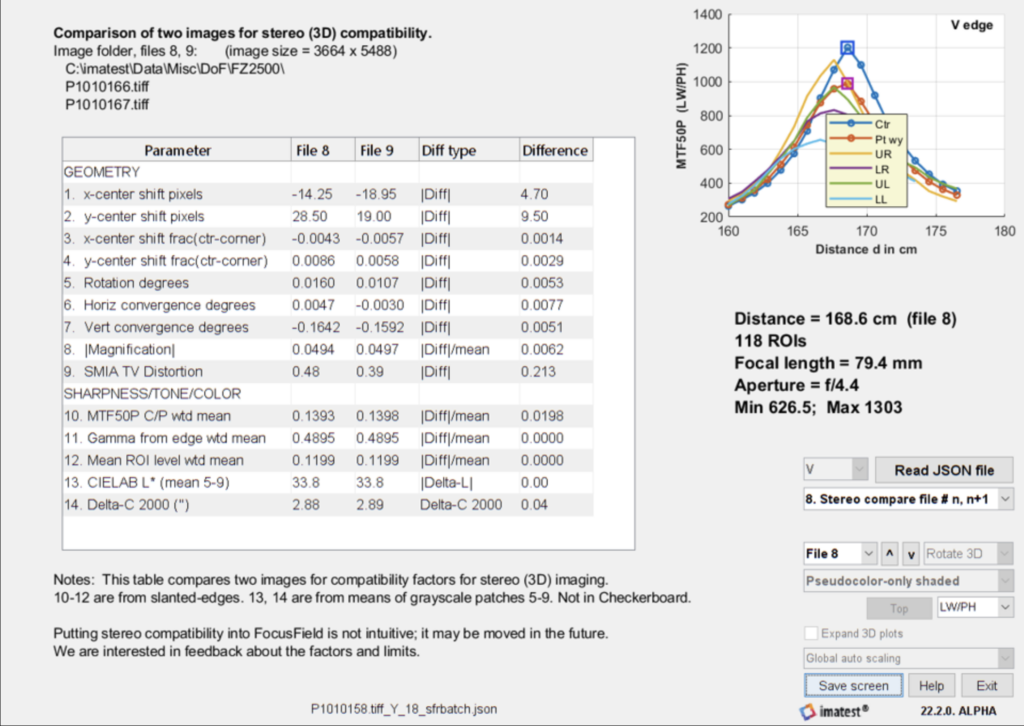Value of Support
There are several reasons why our customers find value in maintaining support on their Imatest license(s):
- Stay current with standards and industry requirements — Our engineers are continually adding and improving features based on advancements in standards and KPI measurements, such as ISO imaging standards groups, IEEE 2020, and IEEE 1858 CPIQ.
- Utilize the latest capabilities — We release over several software updates each year that enhance usability, add tests, and fix bugs. Our updates include customer-requested features, chart feature measurements, improved calculations, new modules, and updated metrics.
- Leverage our engineers’ diverse knowledge of imaging science — Receive priority support from our knowledgeable Imaging Science Engineers to help solve any challenge you are facing with your project and analyses.
Click the button above to upgrade or renew support.
The 25.2 Release Includes:
- IEEE 2020 Flare Method A target & analysis.
- Updated 36-Patch Dynamic Range Test Target.
- New ColorGray 44 Test Target.
- Stray Light adds image downsampling, averaging normalization, masking tools, colormap customization, faster video output, and improved visualization consistency.
- Color Contrast Enhancement (CCE) Calculation
- Launch Hardware Control GUI from Imatest Master.
- Drag and drop to update to new .ini file.
- Simatest now includes bilinear demosaicing.
- Image Processing can save multiple images as monochrome.
The 25.1 Release Includes:
- Simatest simulates complete camera systems, including the effects of lens degradations, image sensor noise model, and ISP pipelines, enabling all important image quality factors (KPIs) to be predicted. It includes a large set of ISP processing blocks that can be applied in arbitrary order.
- Apple Silicon Support: Native support for the latest MacOS.
- Open With Imatest: Open files directly from Windows Explorer and MacOS Finder into Imatest Master.
- New direct links to the Imatest Store for most analysis targets to easily view Imatest’s chart offerings.
- Improved Console Panel layout with docking and full-screen options.
- New UI Settings page to easily manage user interface preferences.
- Improved Image Preview with the ability to navigate to another image using the left and right navigation buttons without leaving image preview.
- The Settings page has been reorganized with easier access to Imatest Master analysis settings, including IT and Pass Fail settings.
- Documentation of Outputs: New web page and Excel sheets documenting JSON outputs for distortion and sharpness measurements along with Concentric Rings and Stray Light results.
- Concentric Rings FOV: Measure optical distortion, documentation of results.
- Stray Light: Extract metadata from filename, custom luminance weights, calculate IEEE 2020-2024 Flare Method B Mask radius, documentation of results.
- Batchview: Combine multiple parameters into single plots, information metrics, logarithmic vertical axis, plotting options.
- Checkerboard: limit distortion to image circle, information on extrapolation region.
- Color/Tone: eSFR ISO color auto-detection, default reference file update.
- Sharpness Modules: Option to include ESF and LSF in results, Interpolated SFR data in CSV.
The 24.2 Release Includes:
- Concentric ring FOV module (ISO 8600-3) Accurately measure field of view based on ISO 8600-3:2019 Standard methods. This simplifies complex field-of-view measurements and enhances visual representation, ensuring precision and reliability in your assessments.
- eSFR ISO 12233 2023 9-star target support the eSFR ISO analysis module now supports 9-star variant of the ISO 12233 2023 standard resolution target.
- Stray Light Low memory mode, adds support for analyzing the median channel, additional setting validation, updated INI syntax
- Automatic Chart Detection Improvements skip refinement step registration mark setting, high noise correction registration mark setting, improved chart identification when adding multiple images at once.
- macOS Sequoia support
- Information metrics includes Edge Location Standard Deviation output.
- Flatfield different thresholds for light and dark blemishes
24.2 Interface Improvements
- Settings interface improvements: Warnings will display if invalid values are loaded for settings included in the new main window. Improved format for Stray Light settings.
- Batch folder processing: Drop folders into the main window to be run as a batch with filtering by filename and extension, inclusion by checkbox, and drag-and-drop reordering.
- Console panel: Monitor errors, warnings, and informational messages in real-time during image processing.
- Restore session: Imatest will remember the last images and selected analysis when closed, and ask if you would like to load them when re-launching.
The 24.1 Release Includes:
Custom Metadata: adds the ability to annotate your image files with extra information. Attributes can be defined and organized to suit your unique requirements. For example, you can log chart distance, lighting conditions, device details, or just free form text notes. This information can be easily viewed and edited in Image Preview.Image Information Metrics from slanted edges is expanded from what was released in 2023:
- SNRi and Edge SNRi (Independent Observer Signal-to-Noise Ratios). Measures of the detectability of objects and edges.
- Matched filter design Procedure for designing electronic filters that optimize object and edge detection metrics, SNRi and Edge SNRi.
- Slanted edge SFR interpolated binning method for reducing spurious high-frequency signals from SFR curves. Reduces sawtooth artifacts in motion blur analysis and improves the reliability of MTF10 measurements, but is not recommended for general use because it lowpass-filters the SFR.
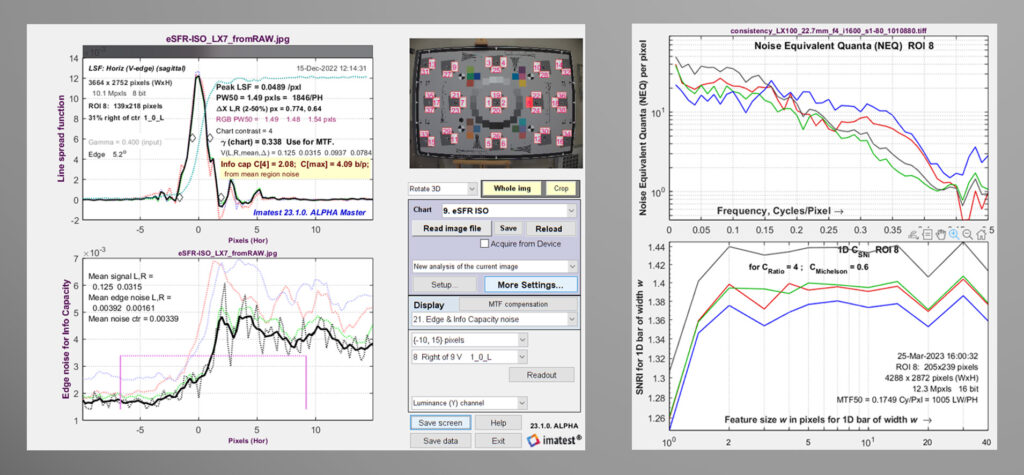
Improved Handling of DNG Files: Added ability to read non-standard bit depth DNG files using direct read option, and Incorporated Adobe DNG SDK into Libraw DNG read option for improved processing according to DNG specification. There is a new dropdown option for the DNG Read method selection in the Options II window, to allow the choice between the original Libraw processing and the new Adobe SDK processing.
Stray Light
General Improvements
Stray Light
- Maximum measurable stray light calculation. The maximum measurable stray light is the stray light that corresponds to one digital number less than the saturation. It represents the worst stray light value that the test configuration is capable of measuring. This metric is useful when comparing results between two different test setups.
- Counting of the number of saturated pixels per analysis frame.
- Support for ITU-R BT.709-6, ITU-R BT.2020-2, and MATLAB luminance calculations.
General Improvements
- Checkerboard: adds High-distortion option for checkerboard detection, providing improved detection robustness for highly distorted images.
- Rescharts and Color/Tone: adds the ability to hide the text overlaid on select plots as an option under the Display dropdown, located at the top of Rescharts and Color/Tone Interactive windows.
- Color/Tone and Stepchart: The functionality of the saturation level setting has been modified to allow for better handling of images with nonstandard bit depth or saturation level offsets.
- Main window: improved General Settings search with highlighting.
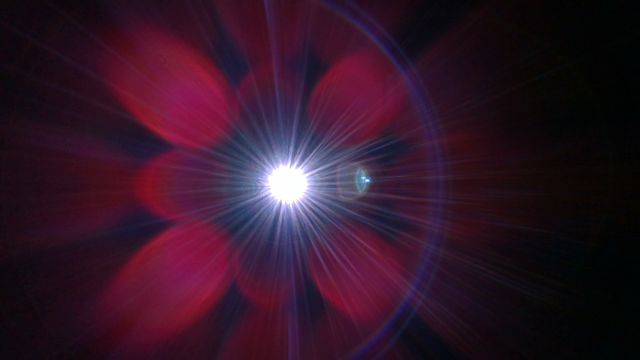
The 23.2 release includes:
eSFR ISO 12233 2023 "Slanted Star": eSFR ISO adds support for analyzing the 2023 “slanted star” revision of the ISO 12233 test chart- Slanted star features double the slanted-edge measurement regions, enabling sagittal and tangential measurements from the corner of an image.
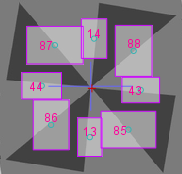
- Logarithmic wedges with improved frequency distribution.

- 18 color patches similar to the industry standard 24-patch chart.
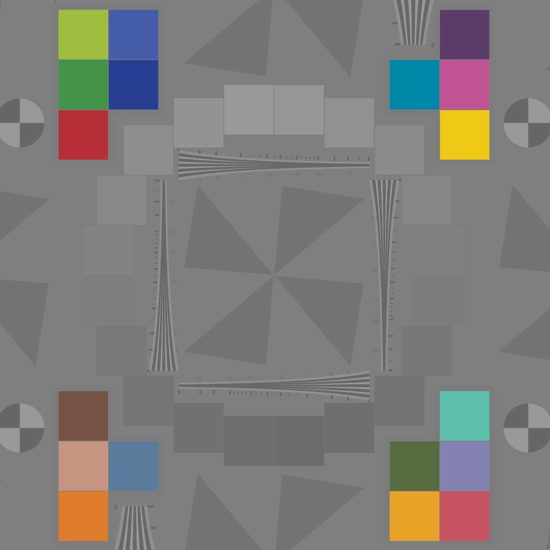
- New test chart available: Inkjet, Lightboxes, High-precision Film.
Additional linearization options for eSFR ISO & SFRplus:
Including the ability to linearize using the inverse of the OECF measured from the grayscale step chart patches. This can improve the accuracy of MTF measurements with systems that have nonlinear tonal response or when using higher contrast targets.
Dynamic Range Postprocessor:
Stray Light
Other Features
Main Window Improvements
Including the ability to linearize using the inverse of the OECF measured from the grayscale step chart patches. This can improve the accuracy of MTF measurements with systems that have nonlinear tonal response or when using higher contrast targets.
Dynamic Range Postprocessor:
- Produces results similar to IEEE P2020 (draft) noise standard. Described in A review of IEEE P2020 noise metrics
- Now supports sensor dynamic range calculations from multi-image exposures from HDR sensors.
Stray Light
- Supports the IEEE-P2020 pre-release flare attenuation calculation. Our next-generation light source, scheduled for late 2023/early 2024, will meet the uniformity requirements for accurate calculation of flare attenuation. Imatest recommends P2020 (draft) normalized stray light calculation with our current Stray Light LED Light Source.
- Ability to normalize with a reference image of a Lambertian diffuser.
- Ability to choose output data transforms including linear, logarithmic, and decibel.
Other Features
- Arbitrary Charts: Includes CIELAB 94 ΔH and CIELAB 2000 ΔH to Arbitrary Charts color analysis.
- Installer: significantly reduced installer and installation size.
- MacOS 14 Sonoma Support
Main Window Improvements
- New License Manager to administer your Imatest license. Activate, deactivate, and more.
- Includes the ability to view the first frame of video files in Image Preview.
- Includes General Settings performance improvements.
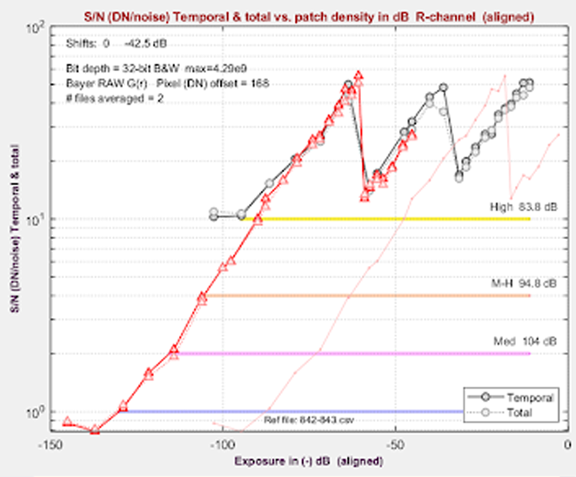
The 23.1 release includes:
The 22.2 release includes:
Stray Light (Flare) Analysis: Imatest analyzes images of a bright light source and calculates the stray light for each image. The included stray light metrics in Imatest 22.2 are Point Source Rejection Ratio (PSRR) and unnormalized stray light. The primary output of the analysis are stray light metric images which quantify the amount of stray light in the input images. Other outputs include light source mask files, various summary statistics in standard output formats, as well as colormapped plots and videos. This feature is a step towards defining and supporting next-generation stray light analysis within IEEE-P2020 and ISO.Auto Exposure & Auto White Balance measurements in Color/Tone: Given a video input file with a changing light level or spectrum, this feature will measure the time a camera system takes to adjust the exposure or white balance of a scene. Metrics calculated: Temporal Video Analysis – Mean Normalized Pixel Level, Exposure Error, Correlated Color Temperature, and CPIQ Exposure Quality Loss.
Enhanced Image Preview: Enabling zoom and pan with rubber band selection, coordinates display, and minimap.
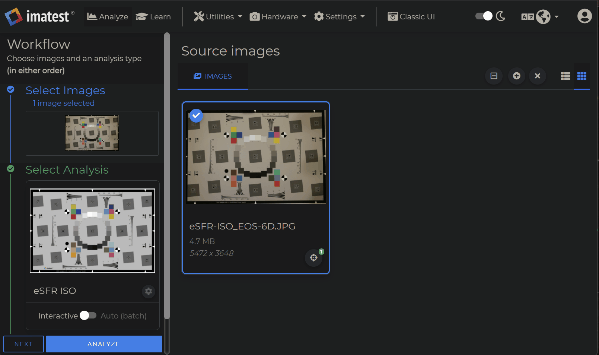
The 22.1 release includes:
Automatic Chart Identification: The new automatic chart identification feature automatically identifies the chart type upon uploading an image. This is advantageous for working with large amounts of images, as it allows users to expedite the analysis options tab. In addition, this feature may help those who are new to the software or are unfamiliar with our charts.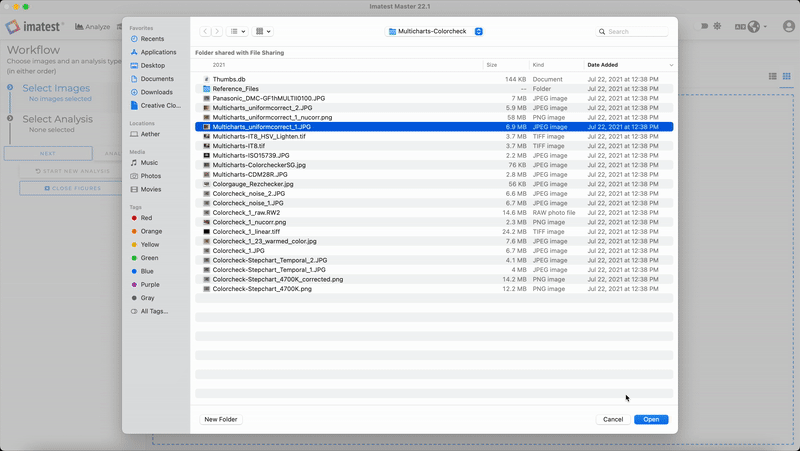
Sagittal/tangential MTF addition to the Radial (lens-style) MTF plot: Imatest 22.1 features improved Radial MTF plot with sagittal/tangential MTF data. This upgraded feature is compatible with a multitude of charts, including SFRplus, SFRreg, eSFRiso, and Checkerboard.
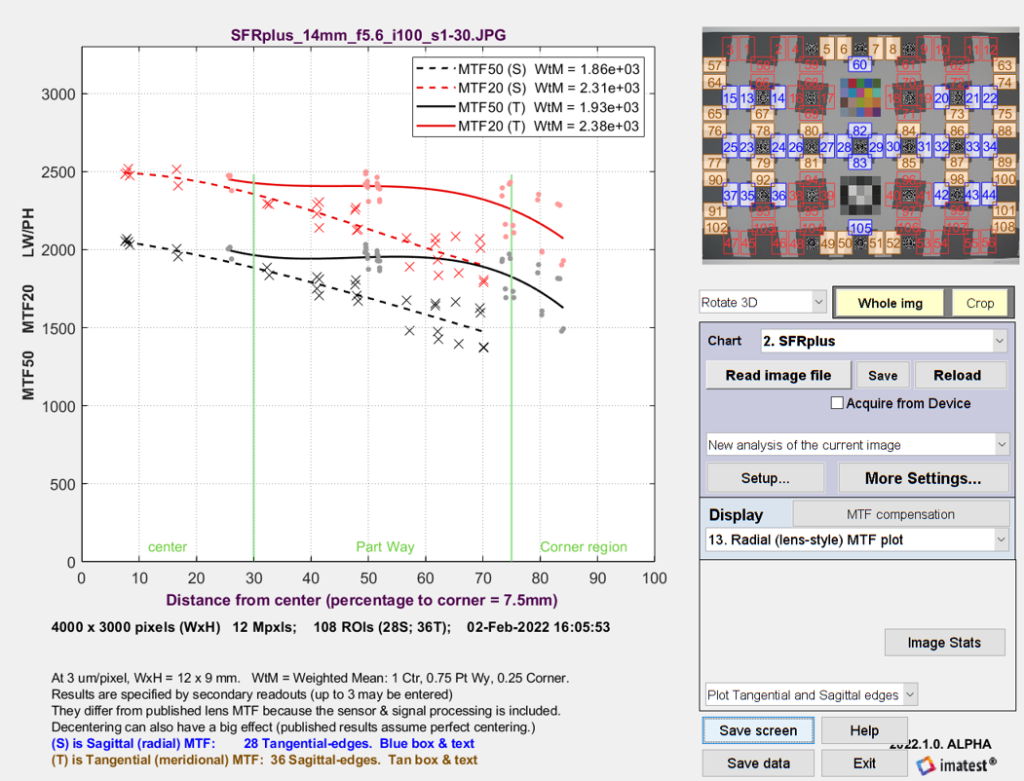
FocusField Postprocessor: Imatest 22.1 introduces FocusField, a postprocessor for displaying camera test results from batches of images acquired at different distances and/or with different focus settings. FocusField can display Depth of Field, Curvature of field, axial chromatic aberration, and exact lens focal length.
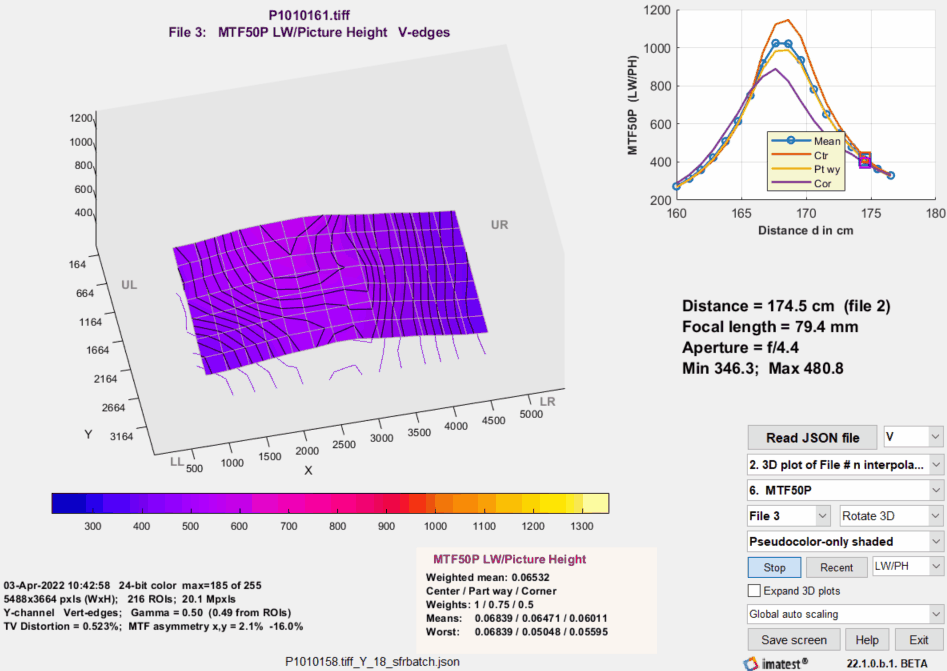
The 2021.2 release includes
New Main Window interface:This window has been designed to be more flexible and easier to use than our traditional user interface. The top navigation bar allows you to access everything you need to run tests in Imatest, including the Analyze tab, Learn tab, Utilities, access to hardware, and settings. A new 'Favorites' feature allows you to save your most-used charts, and the interface also includes a new Search function. There is also the option to switch back to the classic Imatest UI. Also included:- File first workflow
- Dark Mode
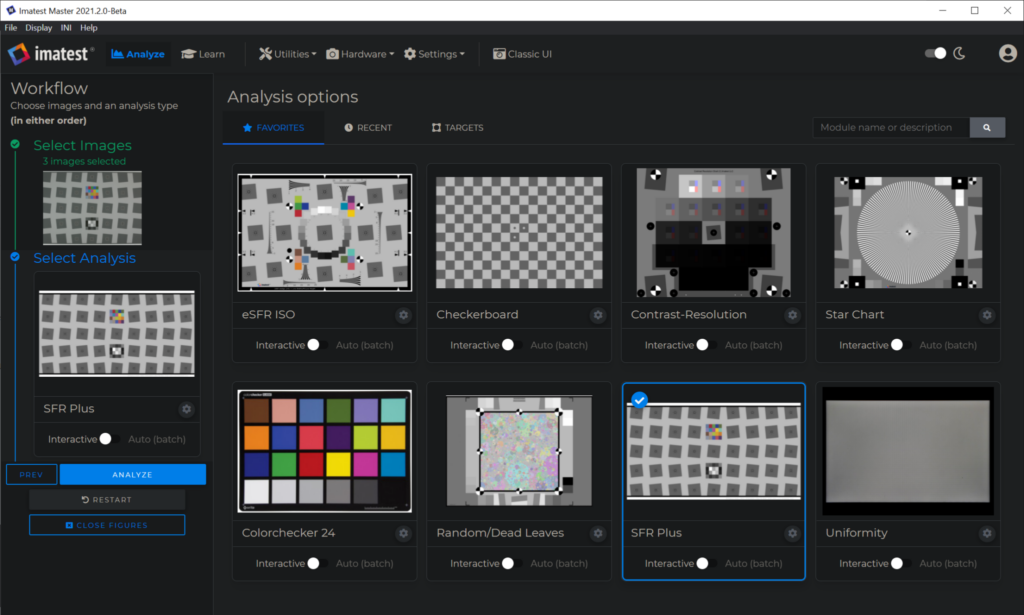
The 2021.1 release includes:
Edge tracking during live focusing in Imatest Master: Improved performance and stability when adjusting focus during live image acquisition. This enables refinement of your regions of interest as focus or distance adjustments impact your camera's magnification and cause your regions of interest to shift. When displaying more than one region, shifts of the position of the target within the image can be tracked.
LibRaw Next Generation RAW decoder: The successor to dcraw offers additional camera support and allows users to read files such as Canon CR3. Libraw supports a total of 1052 cameras, adding support for 321 new cameras compared to what was previously provided with dcraw.
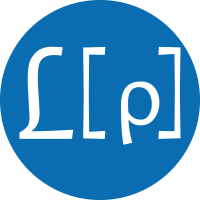
CPIQ v2 Exposure Quality Loss Calculation: Calculation of Exposure Metric which determines the effect of over or underexposure on perceptual quality. Available on Colorchecker-24 and Colorchecker-SG charts through the Color/Tone module. The metric is reported using units of Just Noticeable Differences (JND).
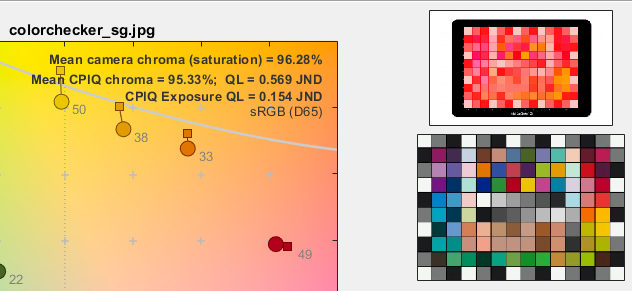
The 2020.2 release includes:
Improvement in calculation speed: Enhanced real-time acquisition and analysis speed in Imatest Master. Up to 6x speedup of slanted-edge SFR calculations, especially when acquiring directly from supported cameras. Significant improvement in speed of other types of analysis. Speedup depends on camera resolution.
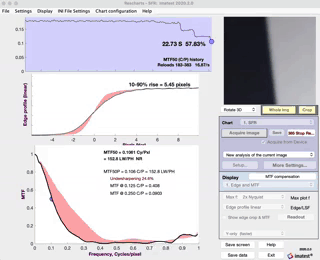
Uniformity statistics based on EMVA 1288: Calculates Spatial and Temporal noise, Dark Signal Nonuniformity (DSNU), Photoresponse Nonuniformity (PRNU) and total SNR. Vertical and horizontal spectrograms and profiles show statistical distributions of the image.
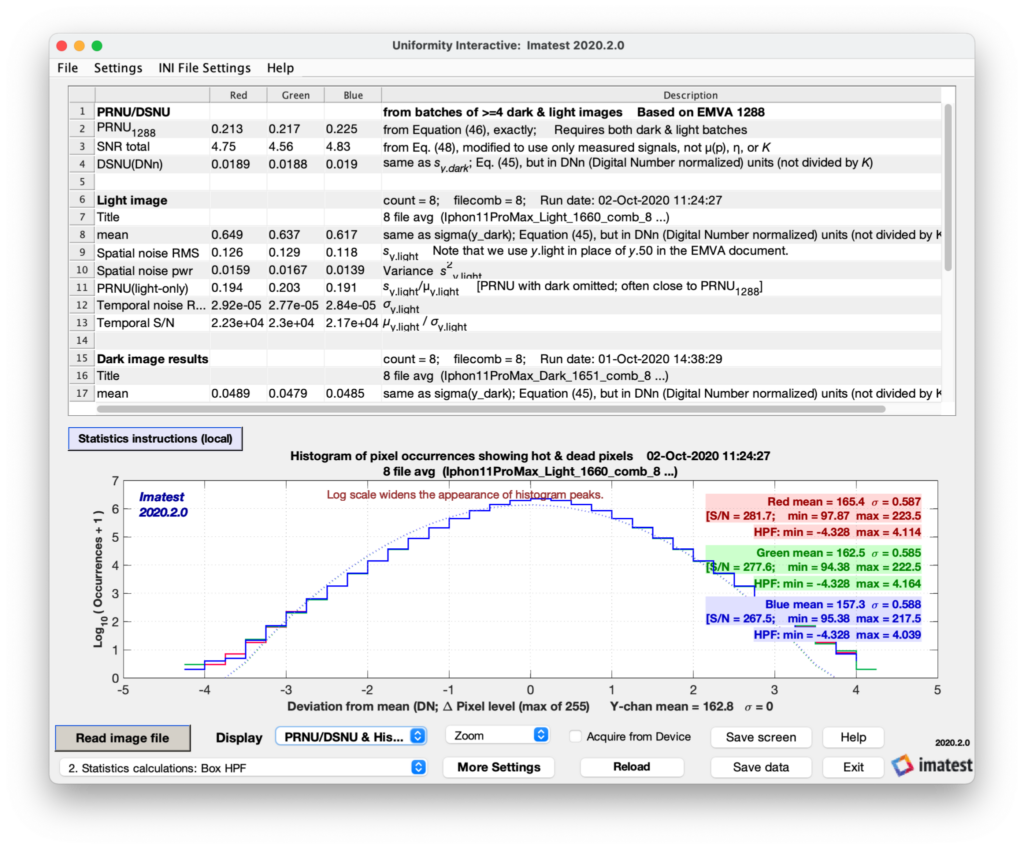
Uniformity measurements from ISO 17957:2015: Generates shading measurements for luminance nonuniformity.
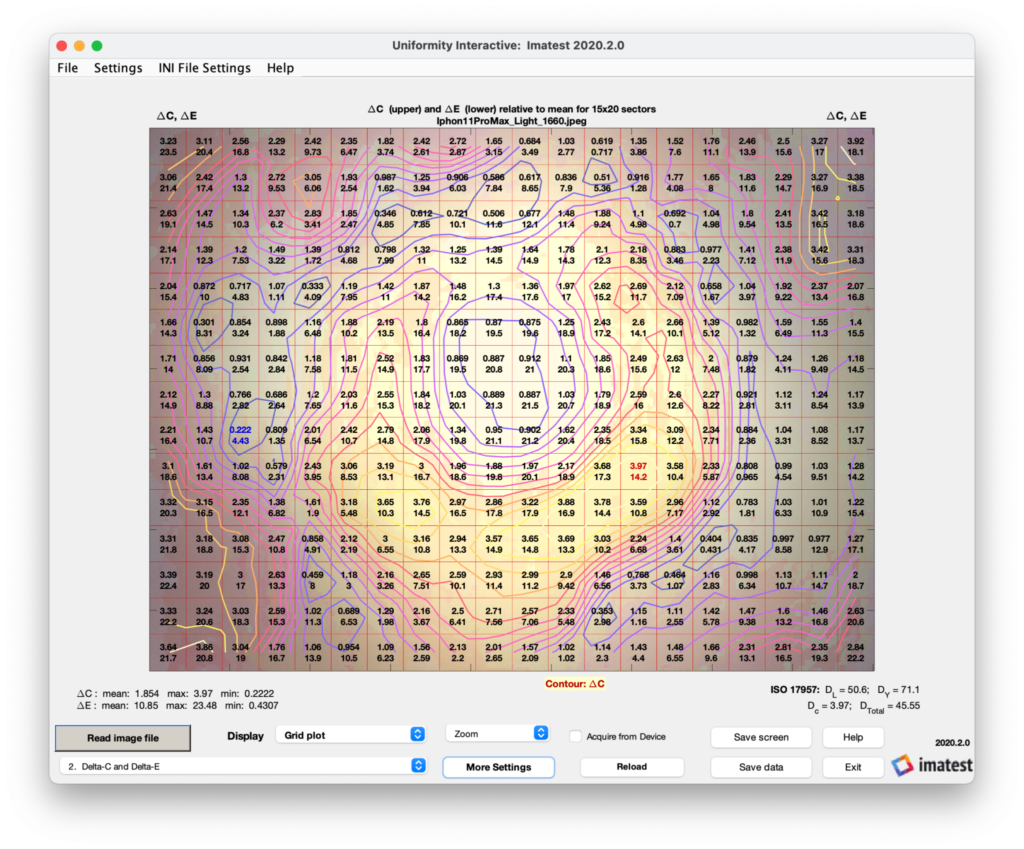
The 2020.1 release includes:
Lighting Control: Set up and control DMX lights (Kino Flo) and Lightboxes as well as monitor lighting conditions with an Isolight puck directly from Imatest using tools specifically designed with image quality testing in mind. This feature enables you to manage the brightness and color temperature of individual lights and save your settings to scenes, which allows you to perform rapid switching between light configurations.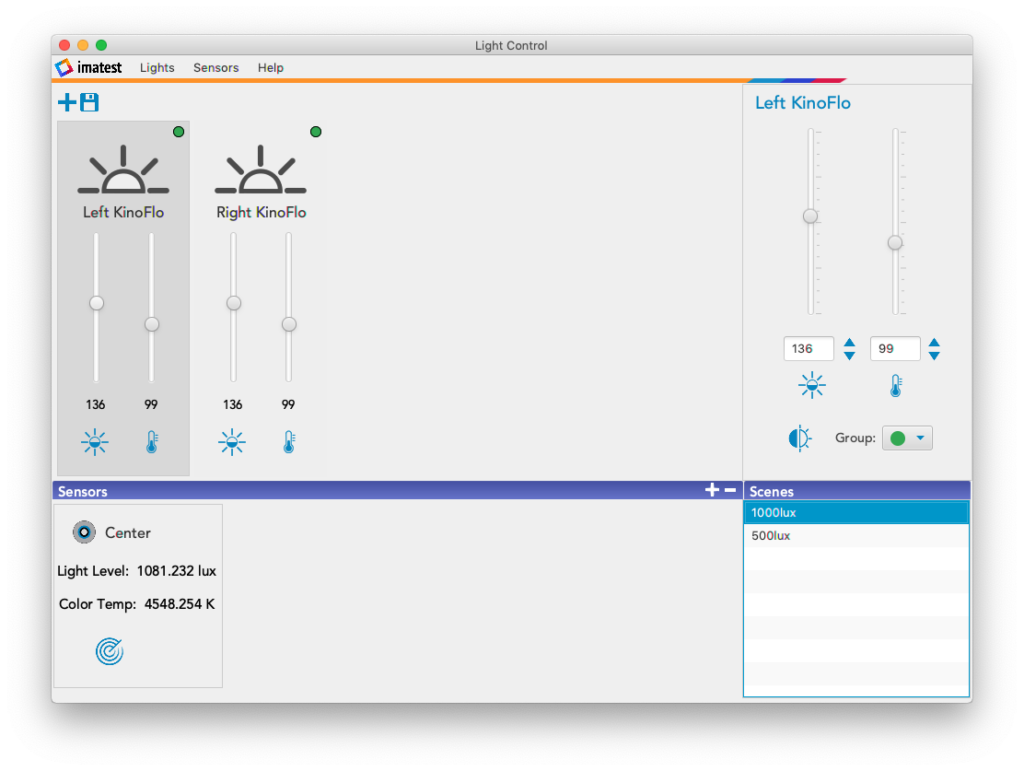
Shannon Information Capacity: Measure the Shannon information capacity of imaging systems in units of bits per pixel from sinusoidal Siemens star patterns. Because frequency-dependent signal and noise are measured from the same locations on the star, they are subject to identical image processing, unlike slanted-edge MTF and flat patch-based noise measurements.
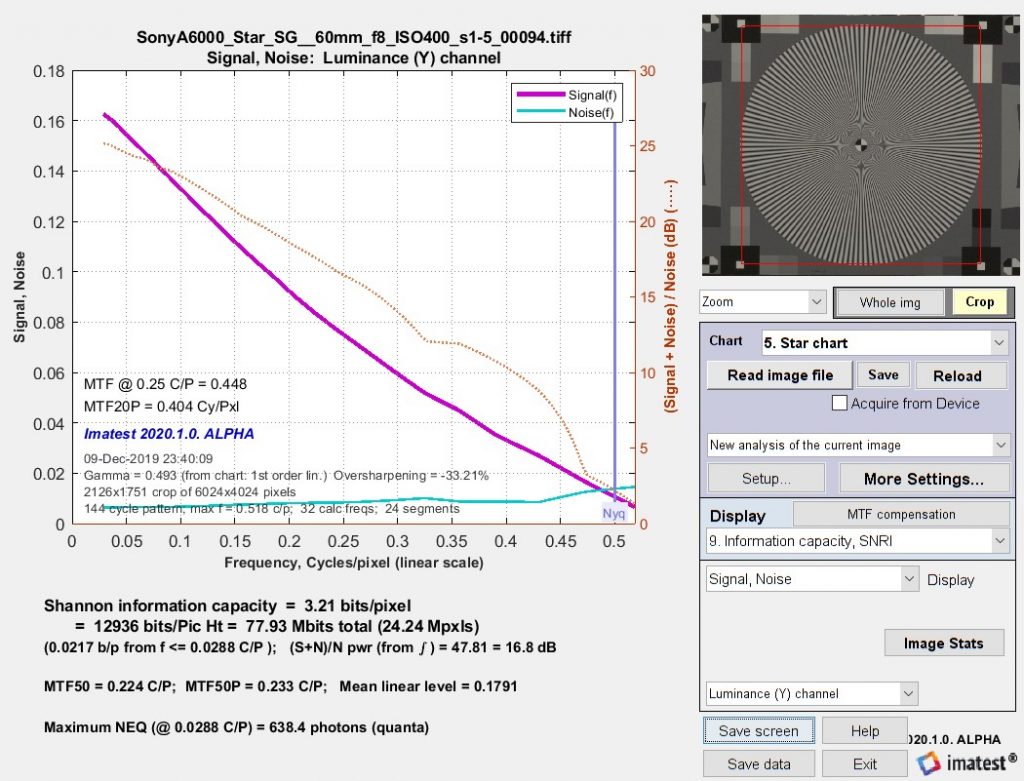
The 5.2 release includes:
ON Semiconductor DevwareX: Support for this advanced image sensor interface software, which replaces Devware. APbase image acquisition API is also supported.
Decompanding: Use this option for the proper processing of piecewise linear (PWL) companded RAW files, which can extend sensor dynamic range by allowing different tonal curves for ranges of digital output values.
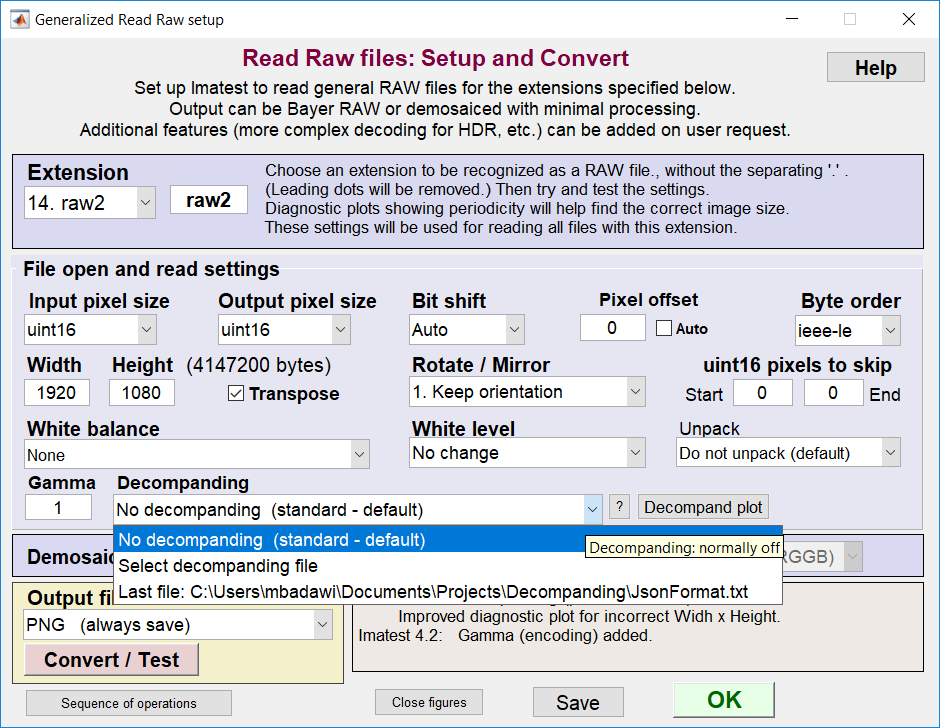
Dynamic Range (DR) Resistance to Flare Light: We can now detect conditions where flare light causes exaggerated DR measurements and can remedy the misleading measurements by limiting the quality-based DR to the slope based DR, which is defined by the scene density where the patch pixel-level stops decreasing.
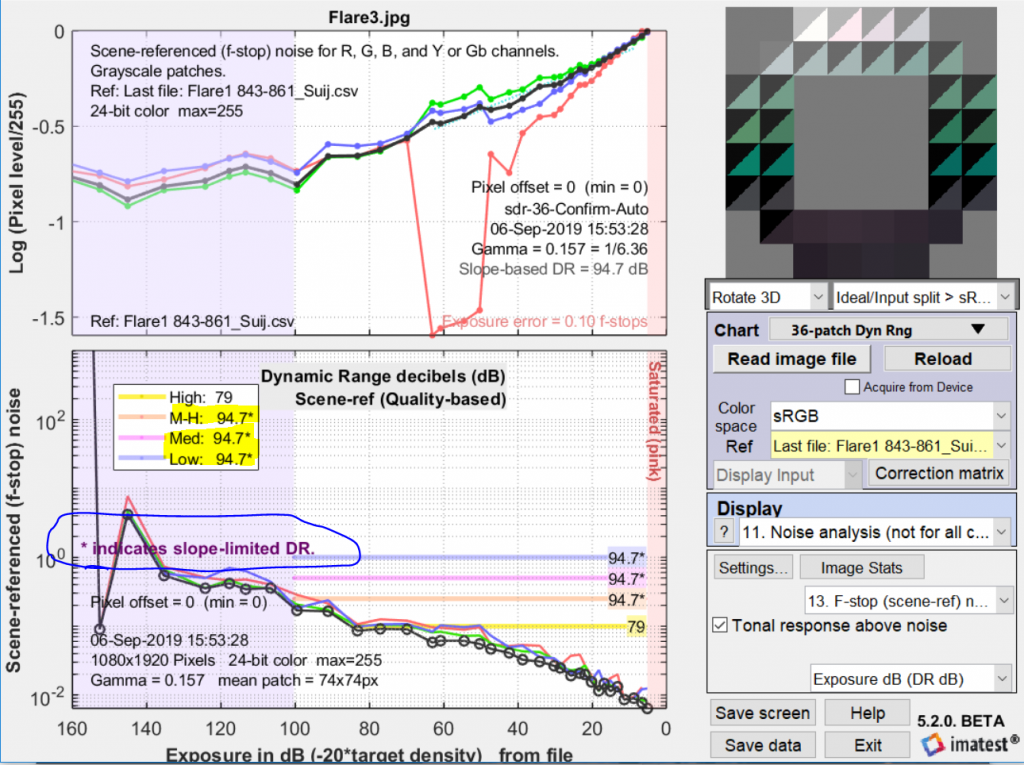
The 5.1 release includes:
MTF Compensation: MTF Compensation reduces the impact of the chart material on measured imaging system MTF. This compensation greatly increases the resolution suitability of test charts, enabling one to test with a lower precision chart or to accurately test at a closer distance where uncorrected MTF results would be degraded.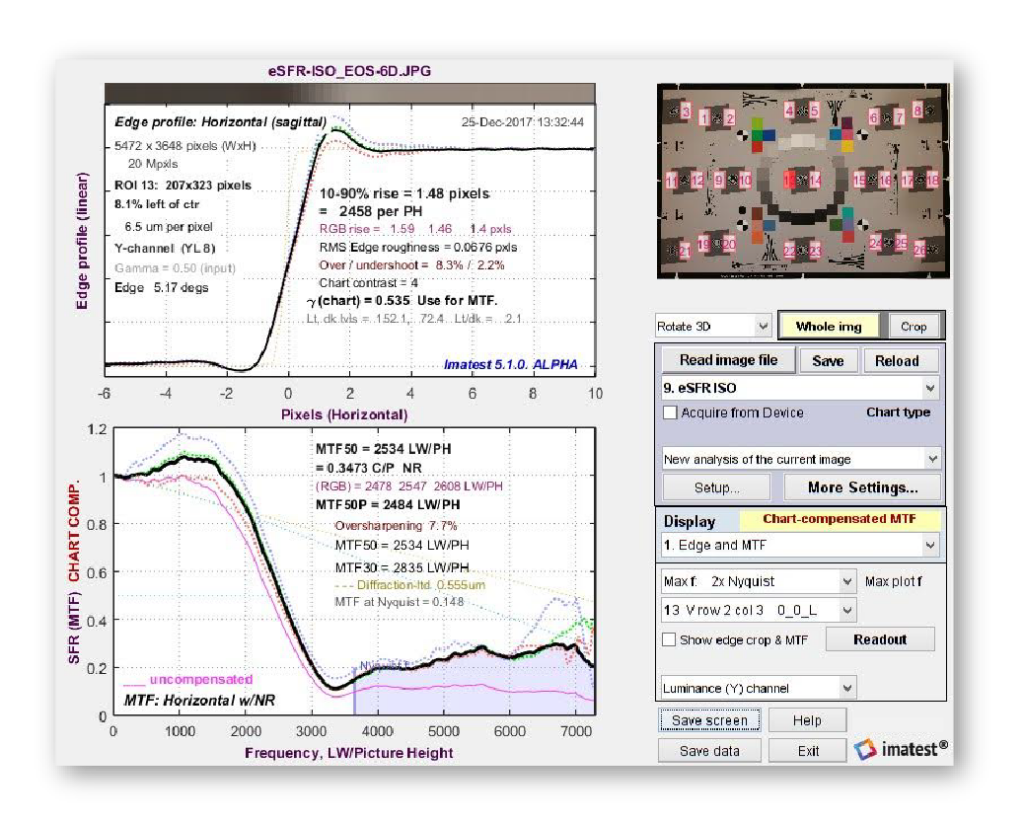
The 5.0 release includes:
Arbitrary Charts: Increase testing performance by combining all the features you are interested in analyzing into a single chart (such as the P1858 Variant Combo). Users can define chart layouts with a definition file to auto detect and analyze target features, significantly reducing the number of images needed for analysis.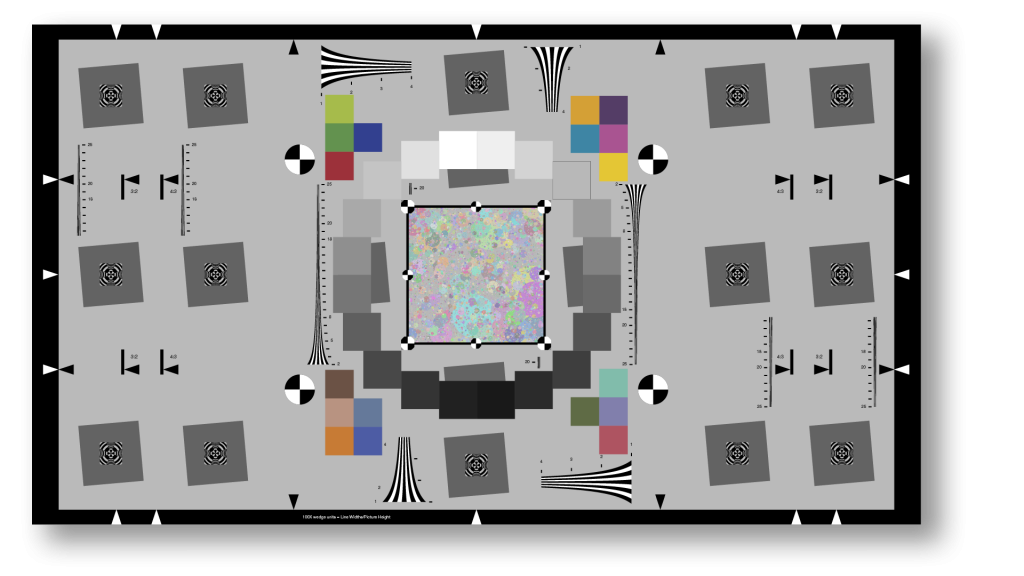
Database: Imatest 5.0 adds the ability to store useful details about the capture conditions used in a test setting. The web-based interface provides the ability to track important information such as camera settings and environmental properties including lighting and distance.
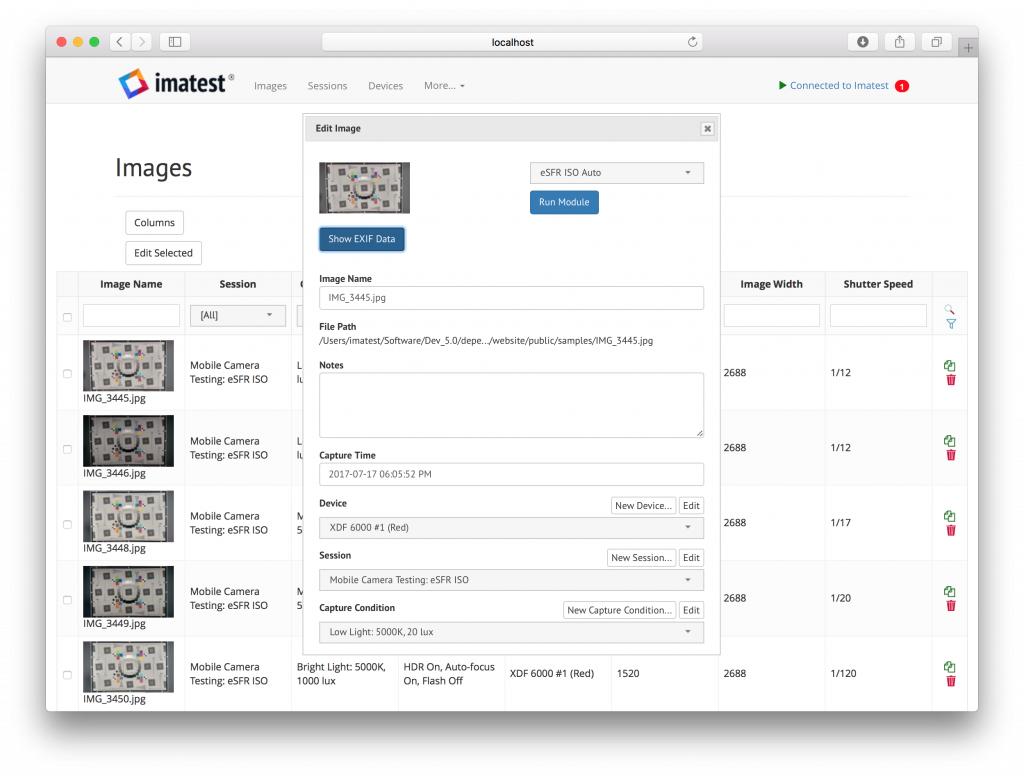
Test Manager: Test Manager provides users with the ability to process a collection of images with automated analysis routines. Use either free-form test plans to assign relevant test categories to each imported file or use predefined test plans to run standard testing procedures such as CPIQ analysis.
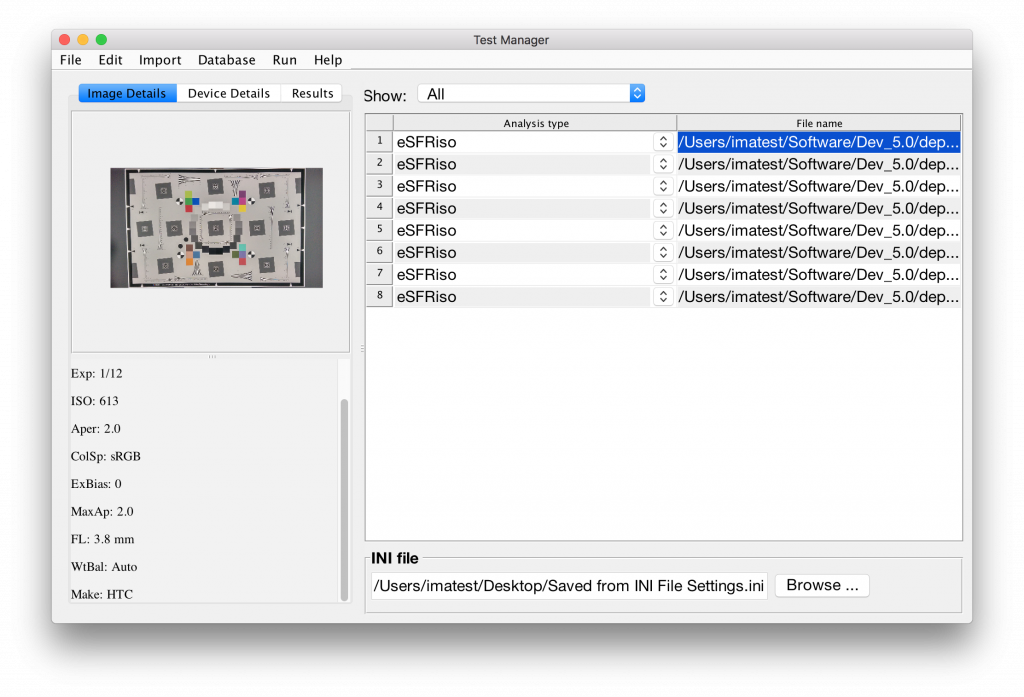
Reports: Create custom reports using python, HTML templates, CSS styling and Javascript interaction to highlight your preferred metrics. Generate reports in interactive HTML and printable PDF formats.
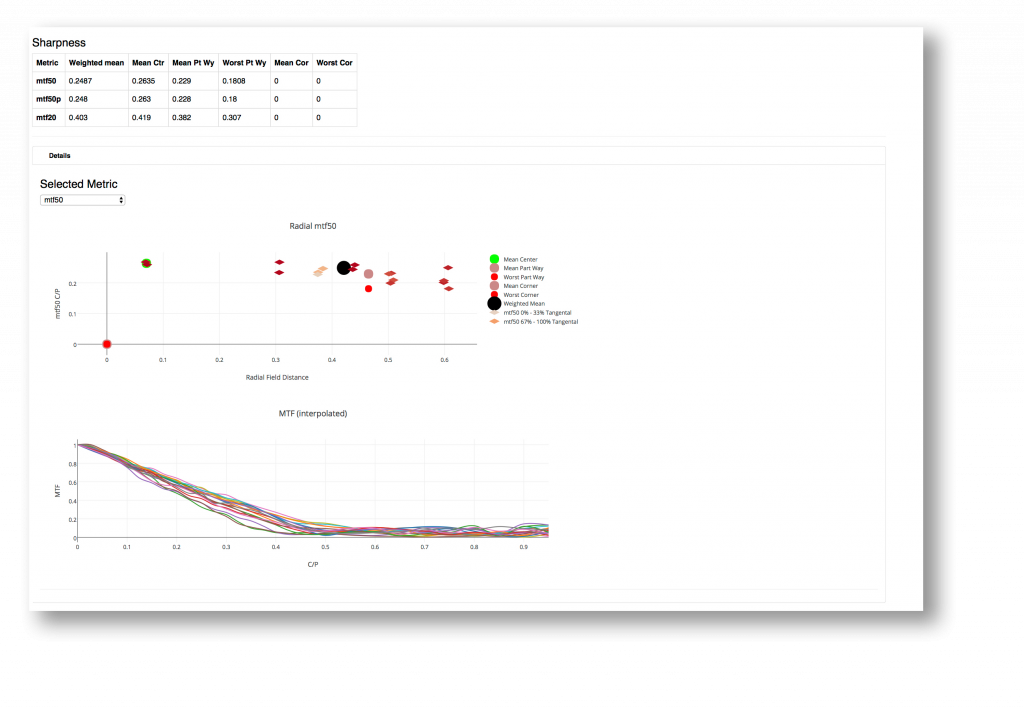
Contrast Resolution Target Analysis: Imatest 5.0 features a new innovative calculation to measure and visualize the distinguishability of low contrast objects within larger fields, over a wide range of brightnesses. In conjunction with the new dynamic range test chart, the analysis provides meaningful results for tone mapped images.
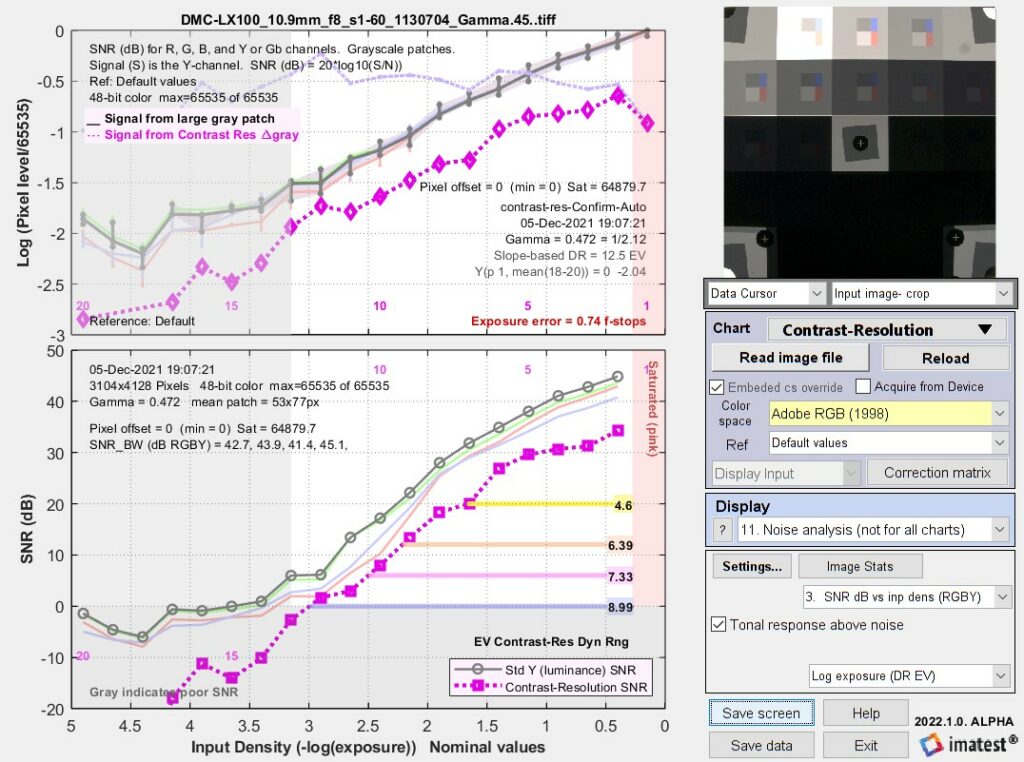
ISO 18844 Flare Analysis: The new ISO 18844 standard for flare measurement works with arrays of high density light traps or black holes. Imatest 5.0's Uniformity module automatically analyzes flare according to the new standard.
